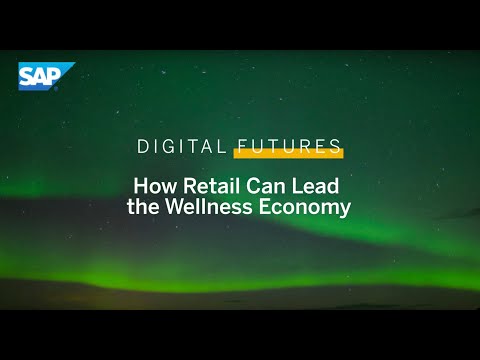Wellness was once a niche concept. Now, it’s gone mainstream – we’re busy, stressed, and sleep deprived. Wellness, generally accepted to mean holistic physical and mental health and the lifestyle choices that support it, is now a US$4.2 trillion global market.

The rapid growth of wellness is being fueled by health and environmental concerns, innovative ideas about healthy aging, and better scientific understanding of the connection between body and mind. Growth has also been driven by the ability of consumers to self-educate about health concerns and access wellness products online, and by the influence of social media. In the United States especially, it also stems from weaknesses in conventional medical care that include rising costs and lack of focus on preventive care.
But when consumers look for answers about wellness products and services, they see a market that is deeply fraught. Wellness is highly fragmented and it’s hard for consumers to verify the credibility and viability of the things they’re being urged to buy. Consumers are seeking reliable sources of information and products that are trustworthy, verified, and safe and that work.
Retailers have the essential expertise to become trusted advisors in wellness. No other industry better understands consumer needs or has retail’s expertise in marketing, personalization, and consumer technology, including early uses of artificial intelligence (AI). Meanwhile, retailers have a history of combining seemingly dissimilar or unrelated experiences and brands – think fancy restaurants within department stores or cafe-bars in laundromats.
Retailers: Your Wellness Advisors
The retailers that will lead in the new wellness economy will use these skills to gain market share, loyalty, and growth by combining what are currently highly fragmented, episodic activities, such as shopping for food, seeking medical advice, socializing, and being physically active. They will craft holistic wellness experiences that combine convenience and emotional satisfaction.
Technology will be the catalyst and enabler in this scenario. Emerging technologies, such as virtual reality, augmented reality (AR), sensors, and AI, are enabling the development of new wellness products and experiences. Switch on Mirror, for example, and suddenly it’s an interactive workout assistant synced to personal biometrics, with live, expert virtual instruction; curated surround-sound audio; and real-time encouragement from an online community.
Meanwhile, advances in infrastructure, such as 5G networks, and connective technologies, such as the Internet of Things, will create opportunities to link what are now highly segmented wellness categories together. Current efforts only hint at the possibilities.
Retailers Connect Across Segments and Industries
For example, as electric cars begin to render traditional gas stations irrelevant, retail brands are looking to convert them into integrated wellness facilities powered by new technology. Architecture firm Gensler and Reebok have created a concept for repurposing gas stations as combined wellness, fitness, and community centers that also generate power for electric vehicles. They envision three types of wellness stops: on interstate highways, on smaller commuter roads, and within communities, all accessible and designed to meet the needs of those three different environments.
Rather than picking up junk food, soda, or tobacco when they stop to fill up, consumers who stop to charge their electric vehicles could sneak in a workout, get a massage, and buy some running shorts.
To go with those shorts, consumers may consider connected running shoes, which they can get from fitness gear retailer Under Armour. The shoes integrate with the nutrition app MyFitnessPal and digital health tracker MapMyFitness. What’s more, consumers who have a Samsung smartwatch and wireless JBL headphones can connect to Under Armour’s Endomondo digital fitness platform. The goal is to help customers use their biometric measurements to improve their overall performance and health.
For consumers who need medical services, a retailer might provide just the right treatment. U.S. retail chain CVS Health has a head start in becoming a trusted medical advisor because its customers regularly interact with its pharmacists. CVS’s new in-store HealthHUBs take medical advice further by helping people with chronic conditions, such as diabetes, obesity, and high blood pressure, stay healthy. The hubs provide access to health and wellness apps, connected monitors and other smart devices, and technology-enhanced weight management programs, while a human Care Concierge educates customers and assists in navigating in-store services and products. The first few HealthHUBs were so successful that CVS is now rolling out 1,500 across the United States. CVS’s ultimate goal may be to guide the 22 million members of insurer Aetna – now a CVS Health subsidiary – to the hubs where the insurance giant’s massive amounts of health and wellness data can be put to use.
Tech Supplies Exponential Speed
Retail’s talent for connecting diverse segments and industries will get a turbo-boost from new digital capabilities that continually appear and advance at exponential speed.
As connectors in the wellness economy, retailers could capitalize on ideas like the following:
- Sweat supervisor: A health professional might use telemedicine to write a prescription for AR personal training sessions that use sensor-integrated athletic wear and workout equipment to track progress, offering opportunities for currently independent segments like fitness gyms and active wear retailers to converge.
- Kitchen consultant: Today’s appliance retailers, perhaps in conjunction with manufacturers, could offer wellness services through smart kitchens that help track and facilitate recommendations of food, supplements, health education, and wellness expertise supplied on demand.
- Mellow maker: Furniture retailers could offer products that monitor sleep, exercise, stress, and diet and that offer AI-enhanced recommendations to improve overall health, such as a class at a branded meditation center.
Retail’s Adaptability Will Redefine Wellness
Due to its many opportunities for technology-driven combinations, the wellness economy will push retailers to think on their feet and be constantly on the lookout for new angles from which they and their customers can benefit. This may sound like a heavy lift, but retailers are already grappling with a deep need to adapt to new technology-driven realities. While many have lost their footing, many more are thriving because of their ability to adapt to what consumers want. That characteristic will be the key to maximizing growth and opening up possibilities for integrated leadership in wellness.
Finally, as technology enables consumers to tune their fitness, nutrition, and healthcare more precisely, retailers will be able to deliver customized products at scale and at a more granular level than demographic segments have historically allowed. By taking advantage of the opportunities enabled by technology and approaching them in the right way, retailers can become true partners in consumers’ wellness journeys and become a powerful presence in the wellness industry.
Download the executive brief How Retail Can Lead the Wellness Economy.
Dan Wellers is the Digital Futures global lead and a senior analyst at SAP Insights research center.
Danielle Beurteaux is a New York–based writer.
Top image via Getty Images. Photographer Henrik Sorensen (image #527920805).
This article first appeared on the SAP News Center.



